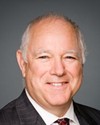Certainly. The system takes into consideration the veteran's age, sex, and chronic diseases. For example, just general preventative medicine may be reminders for the annual flu shot, or if they happen to know that this patient has congestive heart failure, it may also include their pneumococcal vaccination.
These reminders are shown to the clinician, and in My HealtheVet now, we also show them to the veteran if things are due. They also include things like talking to the patient about whether they smoke and, if they do, offering intervention to stop smoking. It may be the use of seat belts. It may be that they live in a certain part of the country and are exposed to different diseases in that part of the country. It can be logic based on any information about the veteran—their age, their sex, their personal health history, their family health history.
For example, we may do a preventative reminder for mammograms on women veterans over forty. If it takes into consideration your personal health history or your family health history, that you have a history of breast cancer in your family, it may do that reminder when you're thirty, for example.
It's the same thing with colonoscopy or colon evaluation after the age of 50, with those things that are recommended through different clinical means. We work with the Department of Defense and with the private sector on what are the interventions, at what time. This then expands into chronic care. For example, diabetics, under our quality measures, are required to have an annual eye exam and an annual foot exam.



